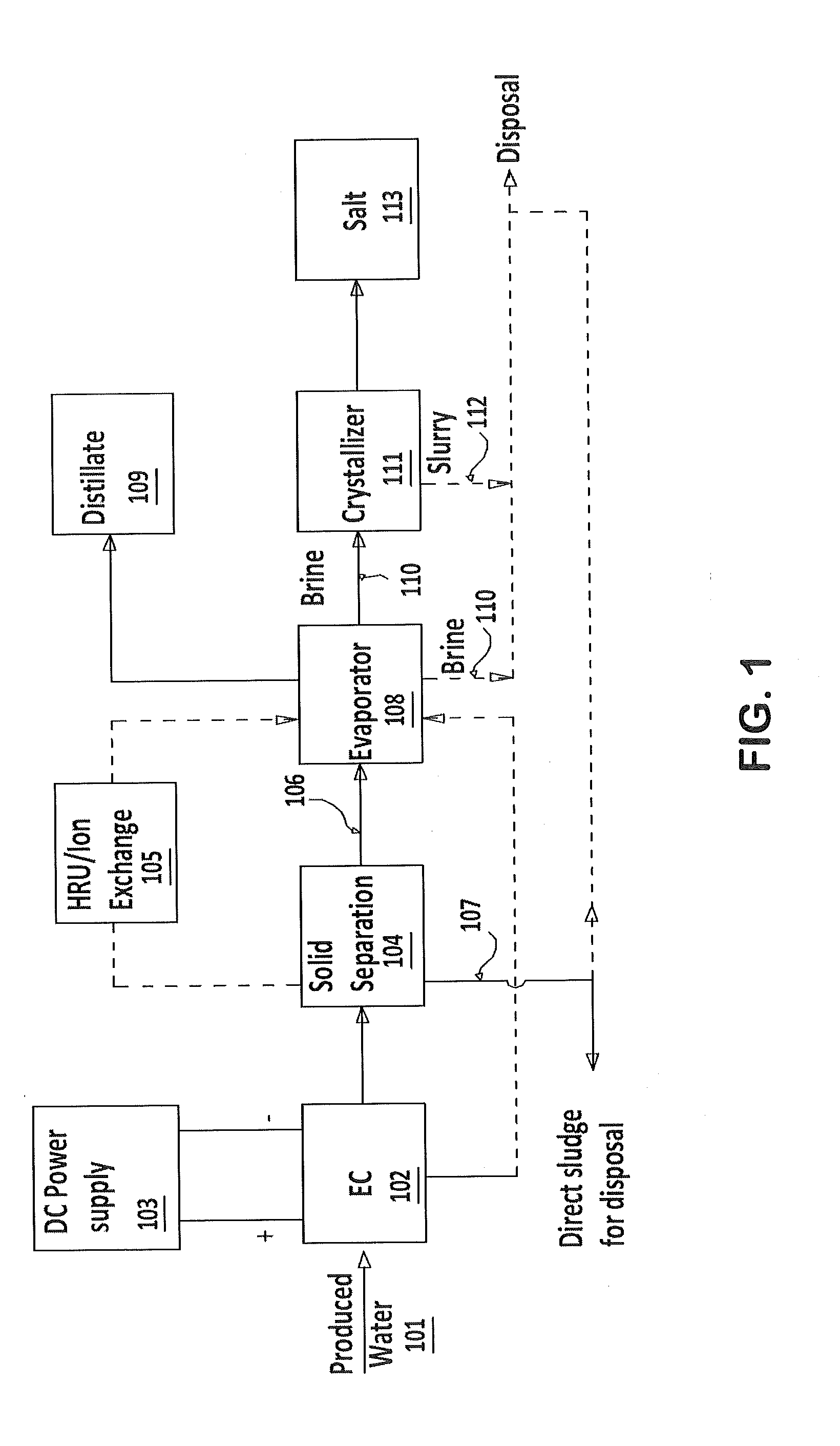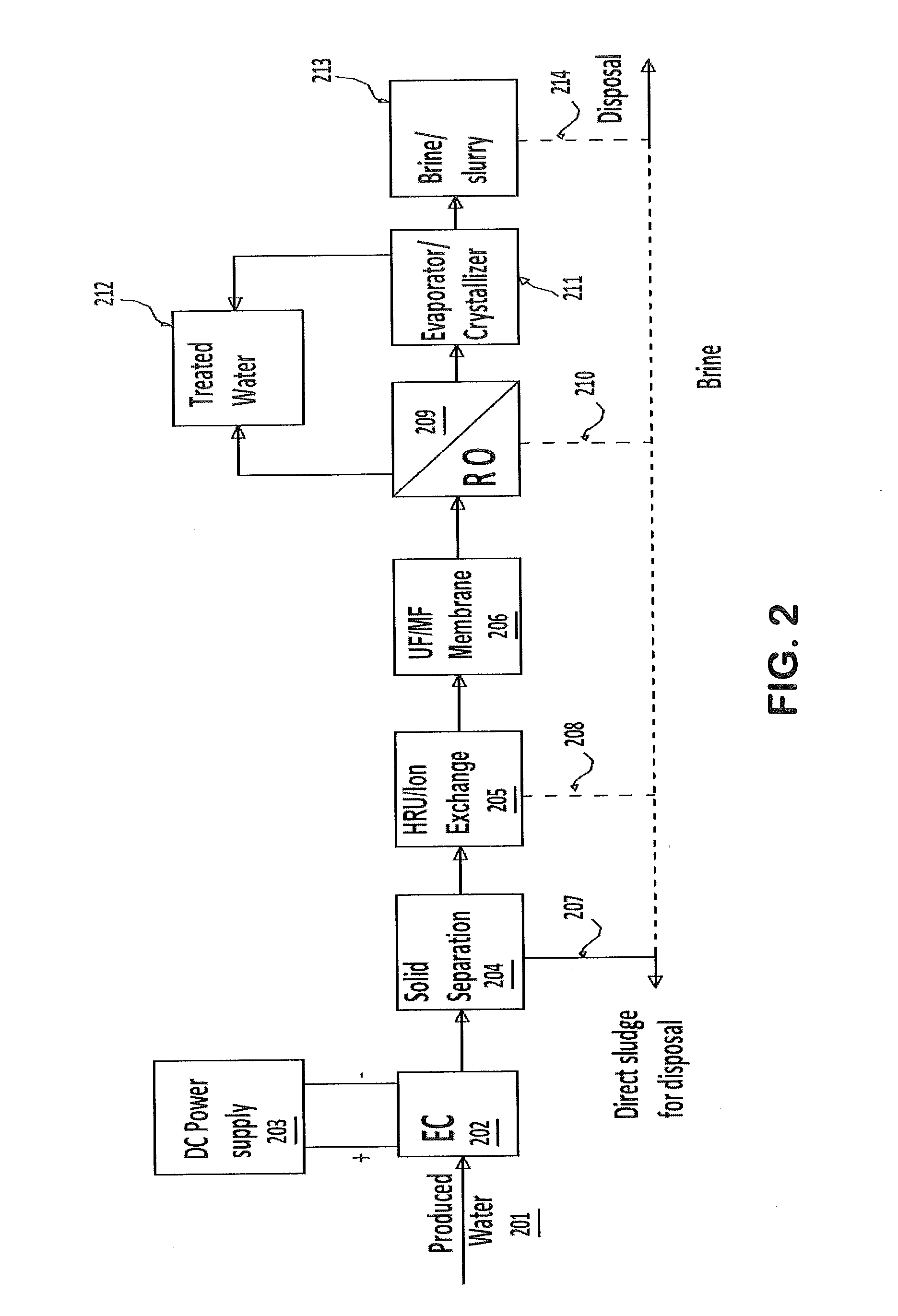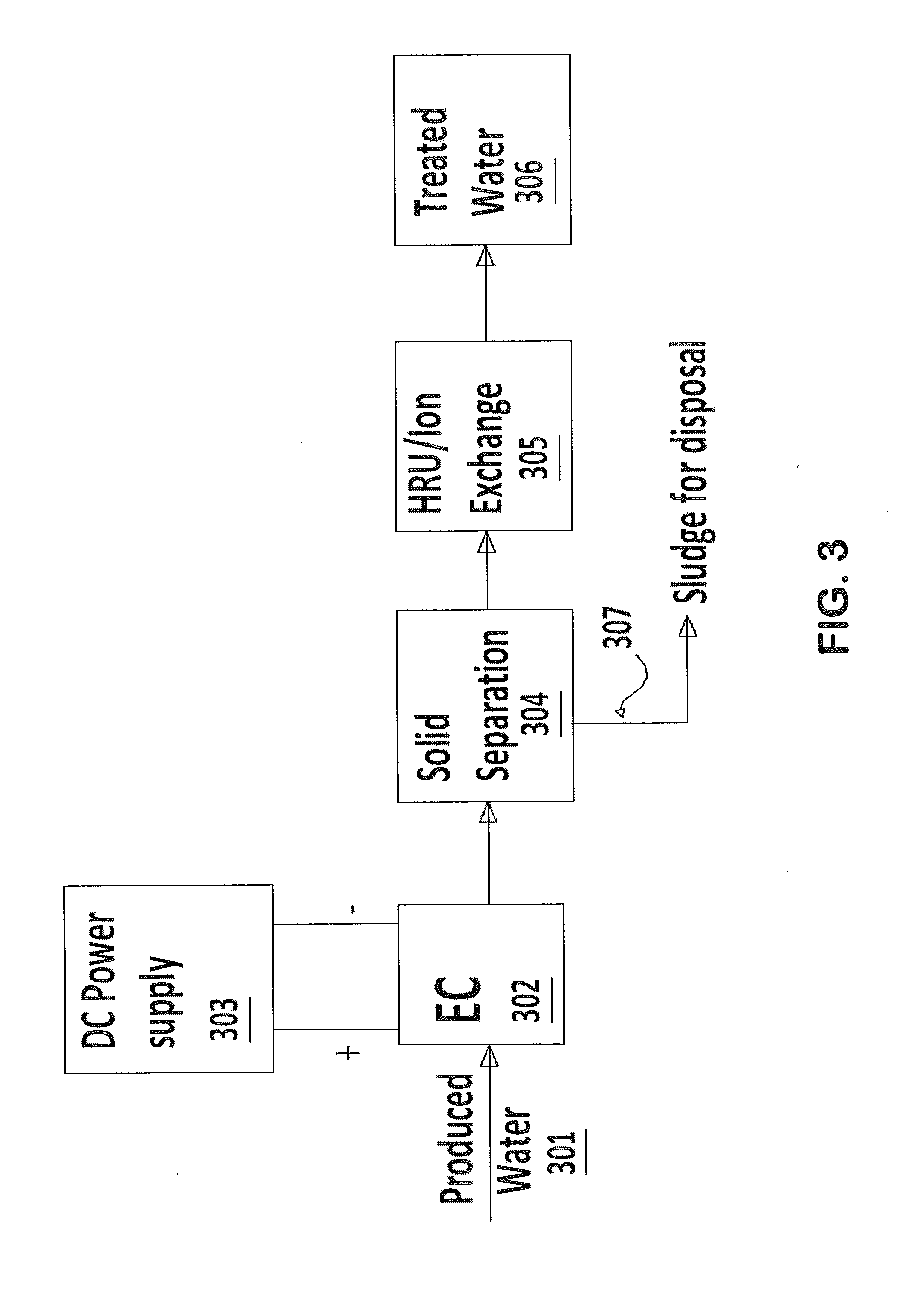Water Treatment Process
a water treatment and water technology, applied in the direction of multi-stage water/sewage treatment, waste water treatment from quaries, borehole/well accessories, etc., can solve the problem of reducing capital costs and achieving the effect of minimising environmental impa
- Summary
- Abstract
- Description
- Claims
- Application Information
AI Technical Summary
Benefits of technology
Problems solved by technology
Method used
Image
Examples
example 1
[0075]In this trial tar sands produced water was treated through an enhanced electro coagulation (EC) process. A small lab scale EC unit was used, consisting of cylindrical shape acrylic housing and metal electrodes. Six numbers of mild steel carbon steel electrodes of size 110 mm×90 mm×2 mm used as anode and six numbers of stainless steel (SS 316) electrodes of size 110 mm×90 mm×1 mm were used as cathodes in the EC unit. The anodes and cathodes electrodes were assembled in alternating sequence, maintaining 6 mm gap between the electrodes. A DC power supply was used for applying the DC current to EC unit.
[0076]Different sets of treatment trials were conducted through EC process on produced water containing very high amounts of silica and organic color. DC current was varied from 1.5 amps to 3.5 amps, with 30 minutes residence time in trials. In EC process two types of sludge formation was observed, the light sludge contains organic impurities floats on water surface, which was remov...
example 2
[0079]In this experiment the tar sand produced water was treated as shown in FIG. 1 (Treatment scheme-1). The tar sand produced water was first treated by EC process through the EC unit used in Example 1. EC process operating conditions, treated water quality and impurities removal efficiency are summarized in Table-4 and 5.
TABLE 4EC Unit operating conditionsParametersConditionsRaw Water Volume, mL4000Applied DC current, Amps2.5Applied DC voltage, Vdc2.0Residence Time, Minute.30DC Power consumption, kwh / m31.25Polyelectrolyte Dose, ppm1.0Sludge Volume, mL220
TABLE 5EC Process Treated Water Quality & Removal efficiencyTreatedRemovalParametersUnitRaw waterWaterEfficiencypH7.799.63ConductivityμS / cm30503060ColorPtCo465013797.1%Silica as SiO2ppm1162.098.3%TOCppm29210464.4%Hardness as CaCO3ppm201050.0%Alkalinity as CaCO3ppm1528842.1%CODppm84028066.7%TurbidityNTU1627.395.5%
[0080]EC treated water after solid separation is passed through sodium zeolite based hardness removal unit (HRU) for the...
example-3
[0083]In this experiment a tar sand produced water was treated through a membrane based process after EC process (FIG. 2). The produced water was first treated through EC process where the most of the impurities were removed. The EC treated water contained less than 5 ppm of silica, less than 10 NTU turbidity and very low level of residual hardness. The EC treated water was then passed through zeolite based SAC based HRU unit and polymeric ultrafiltration membrane for the removal of residual hardness and turbidity. The outlet water of these units contains hardness less than 1 ppm and turbidity less than 0.1 NTU. The treated water at this stage met all requisites for further treatment through reverse osmosis. Finally, the water can be passed through RO membrane for permeate production and more than 90% recovery for further utilization based on the guidelines of membrane suppliers. The experiment results at various stages are summarized in Table-8 and 9.
TABLE 8Treated Water Quality of...
PUM
| Property | Measurement | Unit |
|---|---|---|
| temperatures | aaaaa | aaaaa |
| temperature | aaaaa | aaaaa |
| temperature | aaaaa | aaaaa |
Abstract
Description
Claims
Application Information
 Login to View More
Login to View More - R&D
- Intellectual Property
- Life Sciences
- Materials
- Tech Scout
- Unparalleled Data Quality
- Higher Quality Content
- 60% Fewer Hallucinations
Browse by: Latest US Patents, China's latest patents, Technical Efficacy Thesaurus, Application Domain, Technology Topic, Popular Technical Reports.
© 2025 PatSnap. All rights reserved.Legal|Privacy policy|Modern Slavery Act Transparency Statement|Sitemap|About US| Contact US: help@patsnap.com



